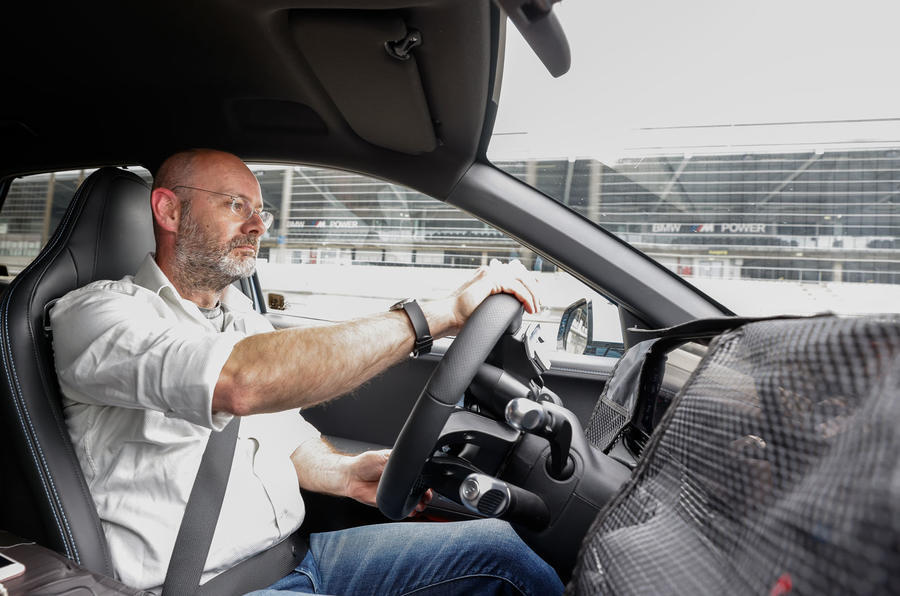Ioniq 5 N’s rev counter runs to an arbitrary 8000rpm
Hyundai Ioniq 5 N simulates engine revs and gearchanges in ‘Ignition’ mode
How involved would you like to be? You might remember that last year Toyota filed a patent for a battery-electric vehicle with an H-pattern gearshift, so that an electric powertrain would respond like a manual internally combusting car, complete with a clutch pedal that felt like the real thing, even though, like the gearlever, it would be false.
As yet, no Toyota has arrived with this hardware, but Hyundai’s N performance division has taken a similar concept.
The Hyundai Ioniq 5 N is the first electric product of Hyundai’s N fun division. “For N, fun to drive is the highest priority. Electrification has transformed our lives but [so far] not our hearts,” Till Wartenberg, N’s vice-president, told me before we drove a prototype. “Car enthusiasts are the last group who can be electrified,” he said. I have a feeling he’s right. I like electric power, but it’s quite telling that when I recount the most fun I’ve had in EVs, an original Tesla Roadster, a Renault Twizy and a Nissan Leaf with plastic ‘drift tyres’ at the back all still feature heavily.
Finally, the Ioniq 5 N on a circuit eclipses all of those. It’s meant to be the car that finally sucks enthusiasts in, and part of the way it does so is by giving us the chance to pull on our muscle memory and aural sensibilities.
“Is shifting possible in an electric car? And what do we do about sound?” asked Wartenberg. The Ioniq 5 N has answers, if you want them.

Select the right mode (there are a lot of them) and it makes a synthetic engine noise, it has a rev counter that runs to an arbitrary 8000rpm and its wheel paddles change non-existent gears. The set-up is modelled to mimic Hyundai’s seven-speed dual-clutch automatic. There are jolts as you pull gears, you get more engine braking at high revs than at low revs and there’s less power at low revs.
This may sound deeply unnecessary and, on paper, it is. “E-shift will, of course, make the car slower,” said Albert Biermann, N’s technical advisor. “But we don’t care about numbers. It’s only about driving fun.”
Biermann was N’s first chief and before that the boss of BMW’s M division, so he’s of an age to have spent most of his career alongside old-school mechanical noises. “We’re using sound to intuitively communicate,” he said. “For me, as an N guy, Ignition [the false-sound mode] gives me the right feedback. We think it helps you a lot to play with the car.”
I did too, but ever since I started playing with cars, they’ve made sounds. When Jaguar launched its I-Pace one-make electric race series in 2018, one of the racers, Bryan Sellers, described driving it as “like having sensory deprivation”. The sounds his mind had come to associate with speed had been taken away.

This, though, may be no bad thing. Without gear and engine noise, you’re better able to hear the tyres, which give their own clues on grip levels. It’s surely faster.
The Ioniq 5 N’s various modes include other synthetic noises too, varying sound volumes, or noises but no gears. My two preferences were having all the engine and gear experience on or having all of them off. Where – gratifyingly, even in silence – I still thought it was the best-handling, most fun EV I’ve driven.
Over two days with it, I know how involved I enjoyed being. But I wonder, over a lifetime, how much will that change?
Source: Autocar